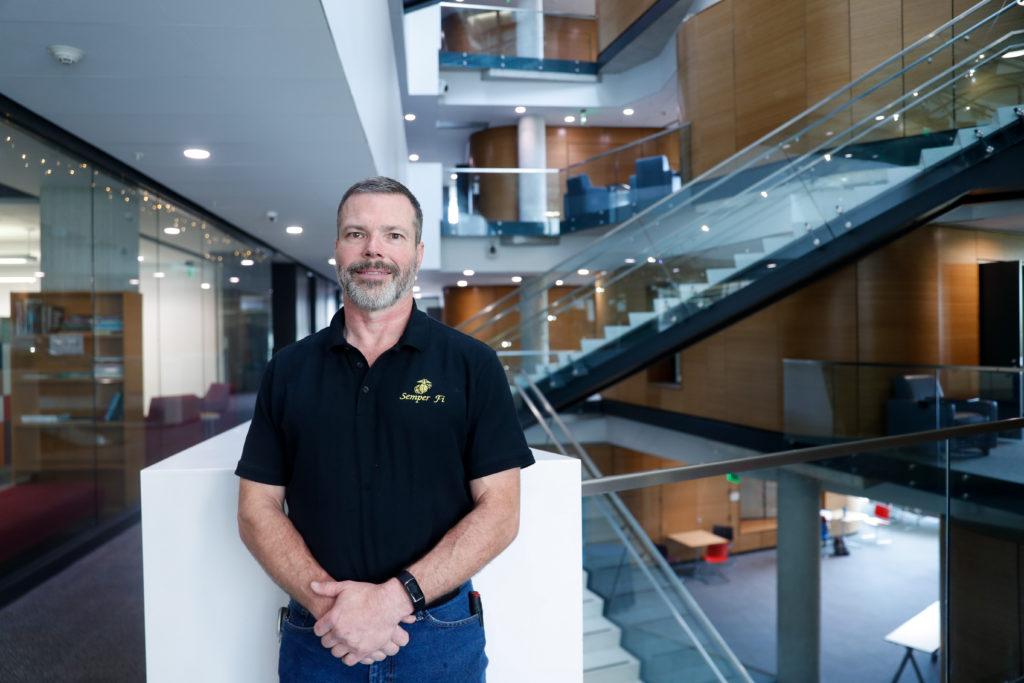The sounds in most GW classrooms consist of clicking keyboards and professor droning on during lectures — but in some classes, the halls are instead filled by the soaring guitar riffs of 1980s rock.
Professors from all corners of GW said their motivation for incorporating tunes ranges from using fast-flowing hip-hop lyrics to encourage students to pay close attention to a lecture to playing the hard-pounding drums of heavy metal to push pupils to give a punching bag one extra hit. Music plays a role in GW classes beyond lessons structured around music theory, with professors teaching subjects from cardio kickboxing to American cultural history playing music as a crucial part of their teaching style.
Gayle Wald, a professor of American studies and English who teaches about modern American cultural history, said she plays music as her students are settling into class, both to set a comfortable mood for the class ahead and to put the themes of that week’s lecture in the minds of students. Wald also encourages students to pay attention to the visual and narrative aspects like the video and reception of the tunes blasting over the lecture hall speakers by projecting the music videos onto the boards in her classrooms.
“I am teaching from the perspective of a cultural historian, so while I ask students to listen to music I am also very interested in extra-musical elements of listening: to video, the settings of musical consumption, fan culture, the function of memory, the role of the body/dance,” Wald said in an email.
Wald said she plays some classic songs all her students know, and while many enjoy just hearing music already at the top of their Spotify playlists, she also takes advantage of the opportunity to introduce students to activist artists, like Asian American musician No-No Boy who writes songs about Japanese internment camps. At the same time, Wald said students help her learn about new artists, like rapper MF Doom and alternative rock musician St. Vincent.
“It’s hard to keep up with new things, especially as you get older and your ears get more stuck in their ways,” she said.
Roy Grinker, a professor of cultural anthropology who specializes in courses on African culture, said he typically gets to class early and starts playing music like the high-energy Mexican band Grupo Frontera so students will feel comfortable coming up to him to ask questions about assignments, even if the music bears no relation to those assignments. Shy students are nervous to ask questions in front of the entire class, but Grinker said background noise gives students confidence, knowing that their classmates will not hear them.
“A silent classroom does not encourage students to approach me, or perhaps even talk with each other before a lecture begins,” Grinker said.
Grinker said he enjoys taking song requests from students for the beginning of class, but also believes in integrating relevant music throughout the course. He said song lyrics in particular are useful for helping students connect with each lecture’s subject matter for showing students how disempowered groups highlight their plight.
“Ice Cube, Public Enemy, NWA, Ice-T are some artists who I discuss in class for what they communicate about disillusionment with health care disparities, anger at racism and lost opportunities and demands for the recognition of injustices, past and present,” he said.
Brian Stamps, a lifestyle, sport and physical activity professor who teaches cardio kickboxing classes, said he uses music to motivate his students to get through another minute of push-ups in his classes. He said he tries to find songs with more than 120 beats per minute, a high tempo, like many classic rock songs because studies have shown these types of songs loosen the burdens of intense exercise.
“Do you ever try working out listening to nothing but what’s going on around you?” Stamps said. “It becomes very boring very quickly.”
Stamps said he also plays music during the class workouts he leads to introduce students to classic tracks they may not have heard before. He said he often starts his lessons with 1980s rock songs like Van Halen and AC/DC since that’s what he jammed to growing up, before moving into more contemporary pop and rock, but sometimes his students view these songs as retro hits.
“There’s nothing like having a Madonna song or Britney Spears song being referred to as an oldie,” he said. “That makes you go, ‘Oh, I’m really old.'”
Though it might be his formal job to help students gain physical strength and endurance, Stamps said he also finds pleasure in helping them do something completely unrelated — finding and enjoying new music.
“One of the things that I tell my students at the beginning of the semester is that my class should be a fun, stress-relieving class, and if anything or anyone is making it stressful, let me know so that I can fix it,” Stamps said. “Because if it’s stressful, I’m not doing my job. So I make it fun. And music helps.”





